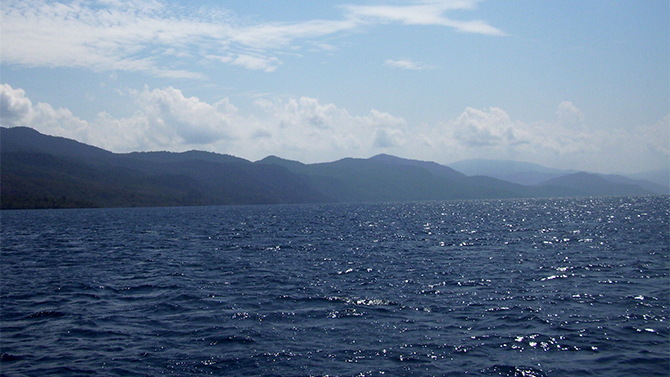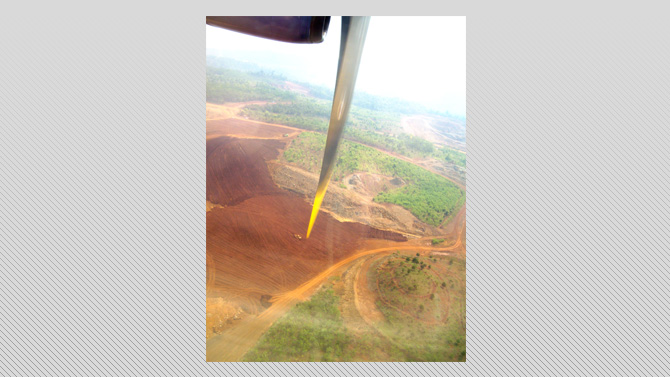

Finding phosphorous
Photos courtesy of Julie Maresca November 01, 2016
Research provides evidence that bacteria in freshwater lakes release methane as a byproduct of phosphorus acquisition
Lake Matano is located on a remote, difficult-to-reach island in Indonesia, but its waters offer up answers to a broad range of scientific questions ranging from pollution and predation to endemic species and evolution.
For the University of Delaware’s Julie Maresca, the long journey to the lake, and the primitive research conditions she encountered there, proved worth the effort when she and her team made an important discovery about methane release in freshwater systems.
Their findings, which have the potential to improve estimation of global freshwater methane, are reported in a paper published in Applied and Environmental Microbiology on Sept. 30.
Maresca, an assistant professor in UD’s Department of Civil and Environmental Engineering, explains that Lake Matano has an unusual chemistry, with very high concentrations of iron. While the bottom 500 meters of the lake is anoxic, or without oxygen, iron in the lake’s upper layer is oxidized in the form of nanoparticles.
“Phosphorus sticks to those particles, so it’s not available to organisms in the surface water,” Maresca says. “This led us to question how these organisms were surviving, as phosphorus is essential to life — DNA and cell membranes can’t be created without it.”
At the same time, researchers have been struggling to obtain accurate estimates of how much methane, which contributes substantially to global warming, is released by freshwater lakes. Estimates range widely, from eight to 73 teragrams per year, with each teragram equal to more than a million tons.
It turns out that bacteria in Lake Matano can provide insight into both the issue of how organisms survive in phosphorus-starved waters and how much methane is emitted by these waters.
When Maresca’s team analyzed DNA sequence data from water collected by collaborators on a previous trip, they found that the genes necessary for degradation of phosphonates were more abundant than expected.
“Based on this finding, we predicted that the isolates would be able to use methylphosphonate, and it turned out we were right,” Maresca says. “We found that four bacterial isolates from Lake Matano are able to obtain the phosphorus they need from methylphosphonate because they can break the bond between carbon and phosphorus in this compound, and during this process, they also release methane.”
Even more interesting is that when these bacteria have a more available source of phosphorus, they stop degrading methylphosphonate, which in turn reduces the release of methane.
Maresca’s findings are an important breakthrough in improving the accuracy of models used to predict methane emissions from lakes.
“These models are currently based on primary production, eutrophication status, extent of anoxia, and lake shape and size,” she says. “To improve prediction of methane emissions, phosphorus availability and sources may also need to be included in these models.”
About the paper
The paper, “Freshwater Bacteria Release Methane as a Byproduct of Phosphorus Acquisition,” was co-authored by MengyinYao, a graduate student working in Maresca’s research group, and Cynthia Henny, a research scientist at the Research Center for Limnology in Indonesia.
Applied and Environmental Microbiology is a journal of the American Society for Microbiology.
Contact Us
Have a UDaily story idea?
Contact us at ocm@udel.edu
Members of the press
Contact us at 302-831-NEWS or visit the Media Relations website




